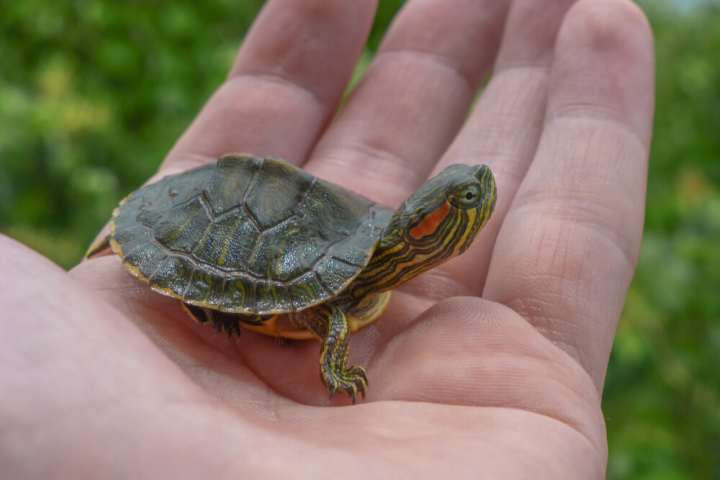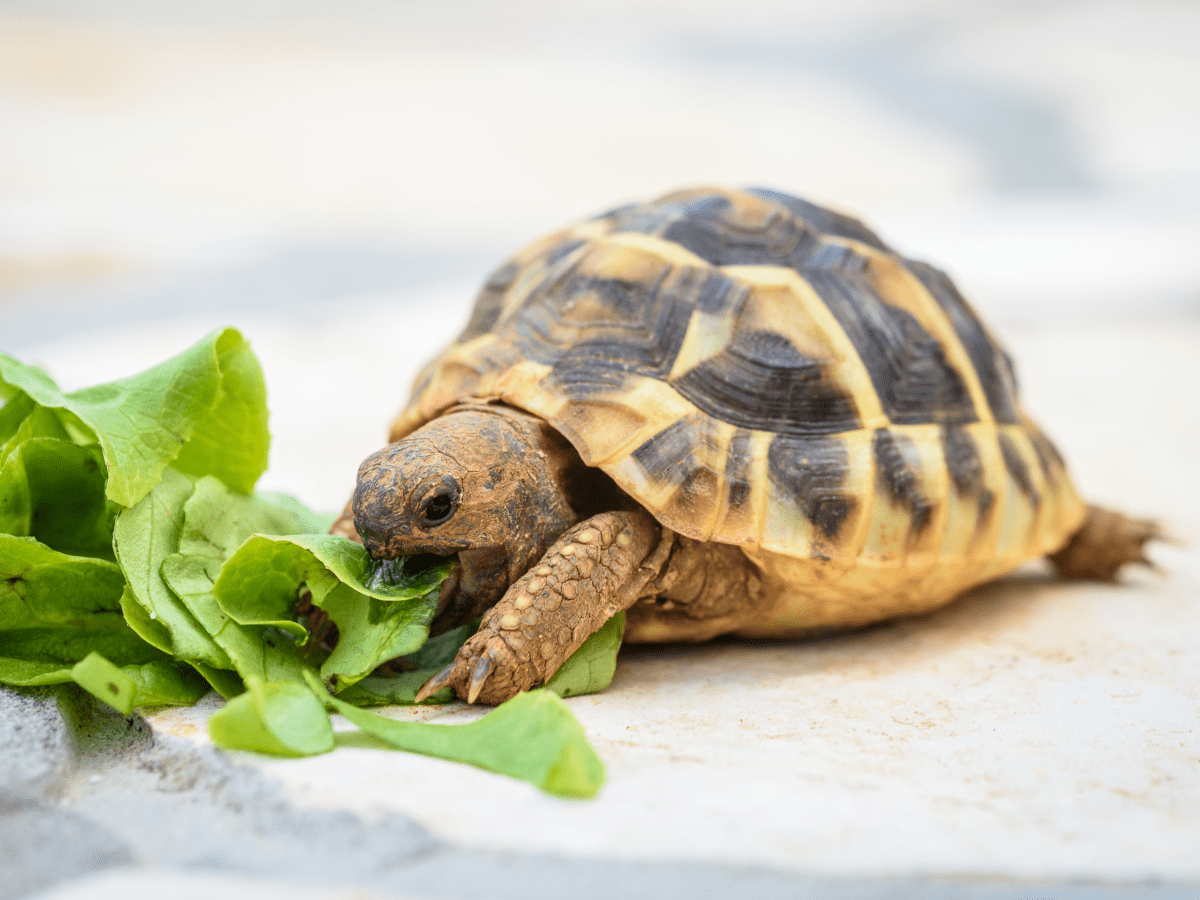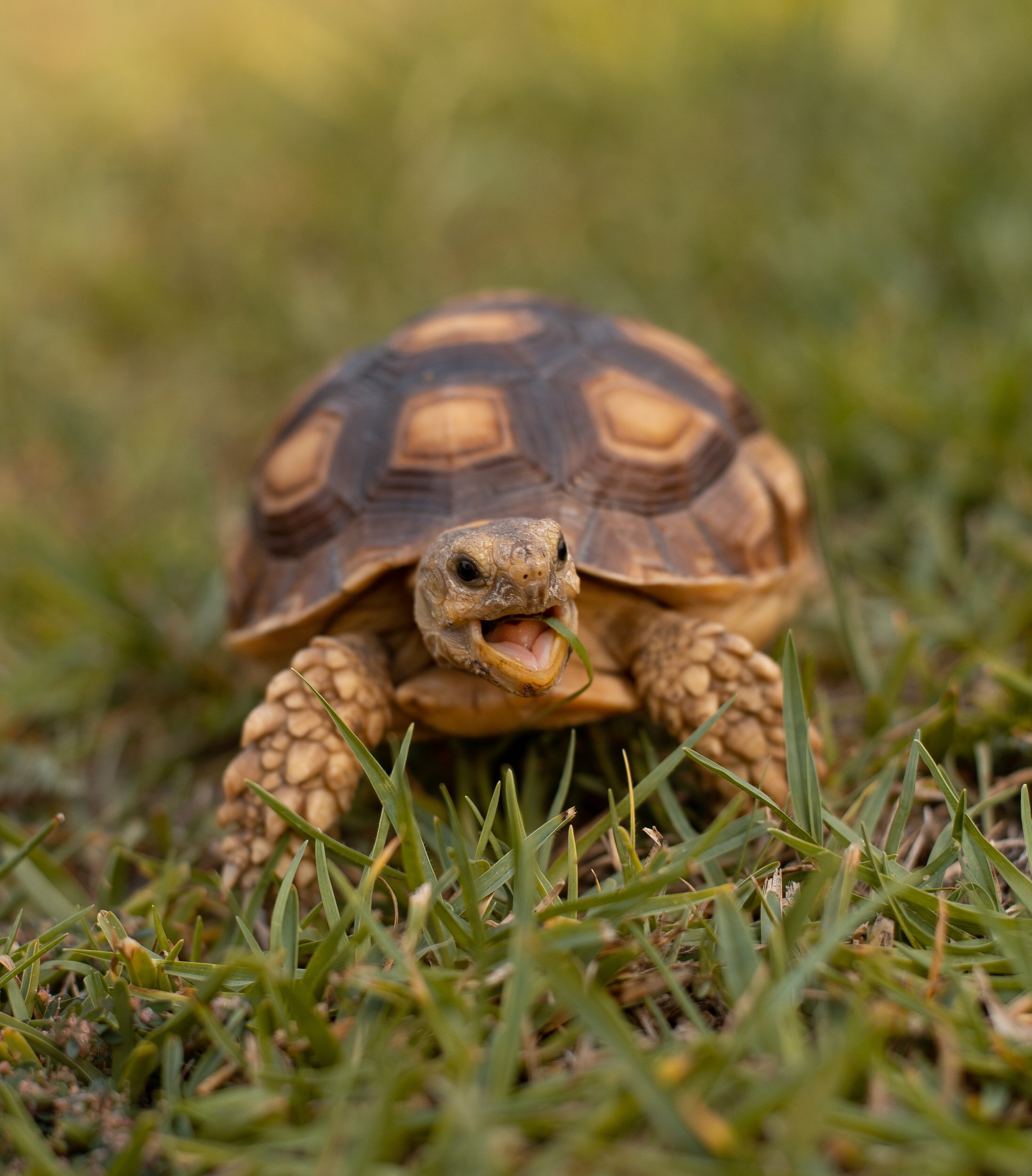So, you’re thinking about getting a pet turtle, huh? Well, you’ve come to the right place! Choosing the right turtle species as a pet can be a challenging decision, but fear not, I’m here to help you out. In this beginner’s guide, we’ll walk through everything you need to know to make an informed and responsible choice. Whether you’re a first-time reptile owner or have had pets before, this article will give you a solid foundation to start your turtle-keeping journey.
Now, there are numerous turtle species out there, so how do you know which one is the right fit for you? Well, that’s exactly what we’re going to delve into. Each turtle species has its own unique characteristics, including size, habitat requirements, and temperament. We’ll take a closer look at some of the most popular species, such as the Red-Eared Slider, Eastern Box Turtle, and Painted Turtle. You’ll learn about their natural habitats, dietary needs, and potential lifespan. By knowing more about each species, you’ll be able to choose the one that matches your lifestyle, space availability, and level of commitment.
So, if you’re ready to take the plunge into turtle parenthood, let’s embark on this exciting journey together. By the end of this article, you’ll be equipped with the knowledge and confidence to choose the right turtle species as a pet and provide it with a happy and healthy life. Let’s get started!

Understanding Turtle Species
Turtles are fascinating creatures that have captured the hearts of pet owners around the world. With their unique shells and slow, deliberate movements, turtles make for interesting and low-maintenance pets. However, choosing the right turtle species as a pet requires careful consideration of several factors, such as the different turtle species, lifespan, and the specific needs of each species.
Different Turtle Species
Turtles come in various species, each with its own characteristics and requirements. Understanding the differences between these species is crucial when considering a turtle as a pet. Some of the most popular turtle species include:
-
Red-eared Slider: Red-eared sliders are one of the most common turtle species kept as pets. They are known for their striking red patches of skin on either side of their heads. Red-eared sliders are semi-aquatic turtles and require both land and water in their habitats.
-
Painted Turtle: Painted turtles are native to North America and are recognized for their vibrant shells, which often feature intricate patterns of red, orange, and yellow. They are also semi-aquatic turtles and require both land and water habitats.
-
Box Turtle: Box turtles are fascinating creatures that are known for their unique ability to fully close their shells. They are primarily terrestrial turtles and require a habitat that includes both land and water.
-
Musk Turtle: Musk turtles, also known as stinkpots, are small and have a distinct musky odor. They are primarily aquatic turtles and require a fully aquatic habitat.
-
Eastern Hermann’s Tortoise: While not technically a turtle, the Eastern Hermann’s tortoise is commonly kept as a pet due to its small size and manageable habitat requirements. Tortoises are strictly land-dwelling creatures and require a predominantly terrestrial habitat.
Lifespan of Turtles
Before committing to a pet turtle, it’s essential to understand the potential lifespan of the species you are considering. Turtles are known for their longevity, with some species living well over 50 years. However, the lifespan can vary depending on the species and the quality of care provided. It’s crucial to consider the commitment required to care for a pet turtle throughout its entire lifespan.
Factors to Consider before Choosing a Turtle as a Pet
Owning a turtle comes with a set of responsibilities and considerations. Before choosing a turtle as a pet, there are several factors to take into account:
-
Space requirements: Turtles require adequate space to roam and explore, both in terms of land and water. Ensure that you have enough room to accommodate the specific needs of the turtle species you are considering.
-
Environmental needs: Different turtle species have specific environmental requirements, such as temperature, humidity, and lighting. It’s important to create and maintain the optimal conditions for your turtle’s health and well-being.
-
Time commitment: Turtles require regular feeding, cleaning, and maintenance. Consider if you have the time and dedication to provide the necessary care for your pet turtle.
-
Financial commitment: Keeping a pet turtle can incur various costs, including habitat setup, food, supplies, and veterinary care. It’s essential to assess if you have the financial means to provide for your turtle’s needs.
Choosing the Perfect Turtle
Once you have a basic understanding of turtle species and the factors involved in owning a turtle, it’s time to choose the perfect turtle for you. Consider the following aspects to ensure you make an informed decision.
Turtle Size and Space Requirements
Different turtle species have varying size requirements and growth potential. Some species, like the Red-eared Slider, can grow to be quite large, requiring a spacious habitat. Others, like the Eastern Hermann’s tortoise, remain small and are more suited to indoor enclosures. Research the adult size of the species you are interested in and ensure that you can provide adequate space for your turtle’s growth.
Turtle Temperament and Behavior
Turtles exhibit different temperaments and behaviors, which can influence your experience as a pet owner. Some species are known to be more docile and friendly, while others may be shy or skittish. Consider your individual preferences and choose a turtle species that aligns with your desired level of interaction and handling.
Turtle Diet and Feeding Habits
Understanding the dietary needs of your prospective turtle species is crucial for their overall health and well-being. Different turtle species have varied diets, with some being primarily herbivorous and others requiring a mix of plant matter and proteins. Research the specific dietary requirements of the turtle species you are considering and ensure that you can provide the essential nutrients they need.

Aquatic Turtles as Pets
Aquatic turtles, such as the Red-eared Slider and Painted Turtle, are fascinating pets that thrive in both aquatic and terrestrial environments. Here are some considerations for keeping aquatic turtles:
Types of Aquatic Turtles
There are several species of aquatic turtles suitable for keeping as pets. Some of the most popular include:
-
Red-eared Slider (Trachemys scripta elegans): Red-eared sliders are known for their vibrant red patches on either side of their heads. They require both land and water habitats.
-
Painted Turtle (Chrysemys picta): Painted turtles are native to North America and are recognizable for their colorful, patterned shells. They are also semi-aquatic turtles that require both land and water environments.
-
Map Turtle (Graptemys spp.): Map turtles are known for the unique markings on their shells, which resemble contour lines on a map. They are primarily aquatic turtles and require a fully aquatic habitat.
Aquatic Turtle Tank Setup
Creating the right habitat for your aquatic turtle is crucial for their well-being. Consider the following factors when setting up an aquatic turtle tank:
-
Size: Aquatic turtles require a habitat large enough to swim and move around freely. The tank size should be based on the adult size of the turtle and should provide ample swimming space.
-
Filtration system: Aquatic turtles produce waste that can quickly contaminate the water. Investing in a high-quality filtration system is essential to maintain water quality and prevent health issues.
-
Basking area: Aquatic turtles require a basking spot where they can completely dry off and thermoregulate. Ensure that the basking area is easily accessible and provides UVB lighting for proper shell and bone development.
-
Water and land area: Provide a balance of water and land areas in the tank to mimic the natural habitat of the turtle species. This allows them to exhibit natural behaviors and meets their specific needs.
Aquatic Turtle Care and Maintenance
Keeping aquatic turtles involves regular care and maintenance to ensure their health and well-being. Some essential aspects of aquatic turtle care include:
-
Water quality: Monitoring and maintaining optimal water quality is crucial for the health of aquatic turtles. Regular water changes and filtration system maintenance are necessary to prevent the buildup of harmful bacteria and toxins.
-
Feeding: Aquatic turtles have specific dietary needs that should be met to ensure their good health. Provide a balanced diet consisting of commercial turtle pellets, live or frozen prey, and a variety of vegetables and fruits.
-
UVB lighting: Aquatic turtles require exposure to UVB lighting to metabolize calcium and prevent various health issues. Invest in a high-quality UVB light source and ensure the turtle has access to it for the recommended duration.
-
Temperature regulation: Aquatic turtles require a basking spot with a temperature gradient that allows for proper thermoregulation. Use a combination of heat lamps, ceramic heaters, and thermometers to maintain optimal basking and water temperatures.
Terrapins as Pets
Terrapins, also known as freshwater turtles, make for interesting and rewarding pets. Here’s what you need to know about keeping terrapins:
Terrapin Species Overview
Terrapins are primarily found in freshwater habitats and have specific care requirements. Some popular terrapin species include:
-
Diamondback Terrapin (Malaclemys terrapin): Diamondback terrapins are native to North America and are known for their beautiful shell patterns. They require both land and water habitats and have unique brackish water requirements.
-
Mississippi Map Turtle (Graptemys pseudogeographica kohni): The Mississippi map turtle is a territorial species found in rivers and streams across the central United States. They generally require a predominantly aquatic habitat.
-
Cooter Turtle (Pseudemys spp.): Cooter turtles are known for their vibrant red markings on their undersides. They are primarily aquatic turtles and require a fully aquatic habitat.
Terrapin Enclosure Setup
Creating an ideal habitat for your terrapin is crucial to their health and happiness. Consider the following factors when setting up a terrapin enclosure:
-
Size: Terrapins require a spacious enclosure that provides both swimming area and dry land. The size of the enclosure should be based on the adult size of the terrapin species you are keeping.
-
Water quality: Terrapins require clean, filtered water to thrive. Invest in a high-quality filtration system that can effectively remove waste and maintain optimal water quality.
-
Basking area: Terrapins need a basking spot where they can fully dry off and regulate their body temperature. Provide a basking platform with UVB lighting and a heat source for proper thermoregulation.
-
Substrate: Select a suitable substrate for the bottom of the terrapin enclosure. Avoid substrates that can be ingested or cause irritation. Gravel, sand, or smooth river rocks are commonly used.
Terrapin Diet and Care
Proper diet and care are essential for the well-being of your terrapin. Consider the following aspects when caring for your terrapin:
-
Feeding: Terrapins require a varied diet consisting of commercial turtle pellets, live or frozen prey, and a variety of greens and vegetables. Providing a well-balanced diet is crucial for their overall health.
-
UVB lighting: Terrapins, like other turtles, require access to UVB lighting for proper calcium metabolism. Ensure that your terrapin has access to a UVB light source for the recommended duration.
-
Water temperature: Terrapins are ectothermic creatures, meaning they rely on the environment to regulate their body temperature. Maintain a suitable water temperature in the enclosure to ensure their well-being.
-
Handling: While terrapins are generally not as handleable as some other turtle species, they can still be observed and interacted with. Be sure to handle them with care and avoid excessive handling, as it can cause stress.

Tortoises as Pets
Tortoises are unique and captivating creatures that can make wonderful pets. Here’s what you need to know about keeping tortoises:
Popular Tortoise Species
There are several species of tortoises that are commonly kept as pets. Some popular tortoise species include:
-
Russian Tortoise (Agrionemys horsfieldii): Russian tortoises are small and manageable in size, making them suitable for indoor enclosures. They have specific heating and environmental requirements.
-
Greek Tortoise (Testudo graeca): Greek tortoises are known for their striking appearance and relatively small size. They require a warm and dry habitat and have specific dietary needs.
-
Sulcata Tortoise (Geochelone sulcata): Sulcata tortoises are among the largest tortoise species and require spacious outdoor enclosures. They have specific dietary requirements and need access to ample sunlight.
Tortoise Habitat Setup
Creating the right habitat for your tortoise is essential for their well-being. Consider the following factors when setting up a tortoise enclosure:
-
Size: Tortoises require spacious enclosures that allow for roaming and exploration. The size of the enclosure should be based on the adult size of the tortoise species you are keeping.
-
Substrate: Select a suitable substrate for the enclosure that allows for digging and burrowing. Options such as topsoil, sand, or a mixture of both can provide a natural and comfortable environment for the tortoise.
-
Hiding spots: Provide multiple hiding spots throughout the enclosure, such as rocks or hide boxes, to allow the tortoise to feel secure and retreat when necessary.
-
Outdoor access: Some tortoise species benefit from outdoor access, as it allows them to bask in natural sunlight and forage for vegetation. Ensure that the outdoor enclosure is secure and escape-proof.
Tortoise Feeding and Health
Proper diet and health care are vital for the well-being of your tortoise. Consider the following aspects when caring for your tortoise:
-
Feeding: Tortoises are primarily herbivorous and require a diet rich in fiber and plant matter. Provide a variety of leafy greens, vegetables, fruits, and occasional flowers to ensure a balanced diet.
-
Hydration: Tortoises need access to clean, fresh water at all times. Additionally, they should be provided with regular soakings to ensure proper hydration and to facilitate healthy digestion.
-
Vitamin and mineral supplementation: Some tortoise species require additional calcium and vitamin D3 supplementation to prevent metabolic bone disease. Consult with a reptile veterinarian to ensure your tortoise’s nutritional needs are met.
-
Regular veterinary check-ups: Regular veterinary check-ups are important to ensure your tortoise’s overall health. Find a reputable veterinarian experienced in treating reptiles and schedule routine examinations for your pet.
Turtles vs. Tortoises: Choosing the Right Type
Understanding the differences between turtles and tortoises can help you make an informed decision when choosing the right type of pet. Consider the following factors:
Differences between Turtles and Tortoises
Turtles and tortoises differ primarily in their natural habitat and overall lifestyle. Turtles are primarily aquatic or semi-aquatic, requiring a combination of land and water in their habitat. In contrast, tortoises are terrestrial, spending the majority of their time on land.
Considering Lifestyle and Environment
When deciding between a turtle and a tortoise, consider your lifestyle and environment. If you have access to a suitable outdoor space and are willing to dedicate more time and effort to habitat setup, a tortoise may be a suitable choice. If you prefer a smaller pet or have limited outdoor space, a turtle might be a better fit.
Selecting the Right Type for Your Home
Every home is unique, and it’s essential to choose a pet that aligns with your living situation. Consider factors such as available space, climate, and local restrictions or regulations when selecting a turtle or tortoise as a pet.

Handling and Interaction with Pet Turtles
While turtles are not typically known for their affectionate nature, they can still be observed and interacted with. Here are some guidelines for handling and interacting with pet turtles:
Proper Techniques for Handling Turtles
When handling a turtle, it’s important to follow proper techniques to ensure the safety of both the turtle and yourself. Follow these steps:
-
Wash your hands: Always wash your hands before and after handling a turtle to prevent the transfer of bacteria or parasites.
-
Approach the turtle slowly: Turtles can be easily startled, so approach them calmly and slowly to avoid causing them stress.
-
Support the turtle’s body: When picking up a turtle, support its body by holding it on either side of the shell. Avoid excessive pressure on any one area.
-
Avoid excessive handling: Turtles are not social animals and can become stressed if handled excessively. Limit handling to necessary activities, like cleaning or moving the turtle.
Ensuring Safety for Both You and the Turtle
Safety is paramount when handling any pet, including turtles. Follow these safety precautions to prevent injury to both you and your turtle:
-
Avoid bites: While most turtles are not aggressive, they may bite if they feel threatened. Respect the turtle’s boundaries and avoid putting your fingers near its mouth.
-
Handle with care: Turtles are delicate creatures and can easily be injured if mishandled. Always handle them gently and avoid dropping or accidentally injuring them.
-
Avoid exposure to harmful substances: Turtles are sensitive to chemicals and toxins. Keep any harmful substances, such as cleaning products or pesticides, away from their habitat.
Building Trust and Bonding with Your Turtle
While turtles may not form the same kind of bond as more social pets, it’s still possible to build trust and establish a connection with your turtle. Here are some tips to foster a positive relationship:
-
Be patient: Turtles are naturally cautious and may take time to acclimate to their new environment and owner. Be patient and give your turtle time to adjust before attempting to interact with it.
-
Observe and interact from a distance: Spend time observing your turtle from afar, allowing it to become familiar with your presence. Gradually introduce interaction by offering food or using a gentle touch.
-
Maintain a consistent routine: Turtles thrive on routine and enjoy predictability. Stick to a consistent feeding and care schedule to establish trust and provide a sense of security for your turtle.
-
Provide enrichment: Enrichment activities, such as offering different types of food or introducing toys or puzzles, can help keep your turtle mentally stimulated and promote a positive bond.
Turtle Health and Veterinary Care
Caring for the health and well-being of your pet turtle requires regular veterinary care and attention to their specific needs. Consider the following aspects when it comes to turtle health:
Common Health Issues in Turtles
Turtles can be prone to various health issues, including:
-
Respiratory infections: Turtles exposed to inadequate heating or improper humidity levels can develop respiratory infections. Symptoms may include wheezing, discharge from the nose or mouth, and lethargy.
-
Shell problems: Shell issues can arise from poor nutrition, trauma, or improper environmental conditions. Shell rot, shell pyramiding, and shell deformities are examples of common shell problems.
-
Parasites: Turtles are susceptible to internal and external parasites. Regular fecal examinations and preventative parasite treatments are necessary to keep your turtle healthy.
Finding a Reputable Exotic Pet Veterinarian
Finding a veterinarian experienced in treating reptiles is crucial for the health of your pet turtle. Consider the following tips when selecting a veterinarian:
-
Research local exotic pet veterinarians: Look for veterinarians in your area who specialize in treating reptiles or have experience with turtles. Read reviews and ask for recommendations from fellow turtle owners.
-
Determine their expertise: Once you have a list of potential veterinarians, contact their clinics and inquire about their experience with turtles. Ask about their qualifications and the exotic pet services they offer.
-
Schedule a consultation: Set up a consultation with the veterinarian to discuss your turtle’s specific needs and ask any questions you may have. This will allow you to assess their knowledge and comfort level with treating turtles.
Routine Care and Maintenance
Regular care and maintenance are essential for the health and longevity of your pet turtle. Consider the following routine care tasks:
-
Regular habitat cleaning: Clean the turtle’s habitat regularly, including removing feces, debris, and algae. Regular water changes and filter maintenance are also important for maintaining optimal water quality.
-
Routine health check-ups: Schedule routine veterinary check-ups for your turtle to ensure its overall health and detect any potential issues early on. Follow the recommended vaccination and deworming schedules.
-
Monitor behavior and appetite: Pay close attention to changes in your turtle’s behavior and appetite. Loss of appetite, lethargy, or abnormal behavior may indicate an underlying health issue.
-
Maintain appropriate temperature and humidity levels: Monitor and maintain the appropriate temperature and humidity levels in the turtle’s habitat to ensure their overall well-being.

Legal Considerations and Regulations
Before obtaining a pet turtle, it’s important to understand the legal restrictions and regulations surrounding turtle ownership. Consider the following aspects:
Understanding Legal Restrictions for Keeping Turtles
Turtle ownership is regulated to protect both the turtles and their natural habitats. Familiarize yourself with the laws and regulations specific to your region or country regarding turtle ownership. Certain species may be illegal to keep as pets, while others may require permits or licenses.
Researching Local Laws and Regulations
Contact your local wildlife or environmental agency to inquire about the specific laws and regulations pertaining to turtle ownership. They can provide you with the necessary information and guidance to ensure compliance with legal requirements.
Permits and Licensing for Exotic Pets
Depending on your location and the species of turtle you wish to own, permits or licenses may be required. Research the specific requirements and procedures for obtaining permits or licenses for exotic pet ownership in your area.
Costs and Responsibilities of Turtle Ownership
Owning a turtle comes with financial and time commitments. Consider the following factors when assessing the costs and responsibilities associated with turtle ownership:
Initial Setup and Equipment Costs
The initial setup and equipment costs for turtle ownership can vary depending on the species and size of the turtle. Some common expenses include:
-
Habitat enclosure: The cost of an appropriately sized enclosure will depend on the species and the materials used. This can range from a few hundred dollars to several thousand dollars for large outdoor enclosures.
-
Heating and lighting: Turtles require specific heating and lighting equipment to replicate their natural environment. The cost will vary depending on the size and type of equipment needed.
-
Filtration system: A high-quality filtration system is crucial for maintaining water quality in aquatic turtle habitats. The cost will depend on the size of the system and the quality of the filtration media.
Routine Expenses for Food and Supplies
Turtles require regular expenses for food, supplements, and supplies. These ongoing costs include:
-
Food: The cost of turtle food will depend on the species and dietary requirements. Live or frozen prey, commercial turtle pellets, and fresh fruits and vegetables should be factored into your budget.
-
Supplements: Some turtle species require specific vitamin and mineral supplements, such as calcium or vitamin D3. These supplements should be included in your budget on a regular basis.
-
Habitat supplies: Regular replacement of habitat supplies, such as substrate, filter media, and water treatment products, should be considered in your budget.
Time and Effort Required for Proper Care
Turtles require a significant time commitment for proper care and maintenance. Consider the following tasks when assessing the time and effort required for turtle ownership:
-
Feeding and cleaning: Turtles need daily feedings and regular cleaning of their habitat, including water changes and filtration system maintenance.
-
Environmental monitoring: Regular monitoring of temperature, humidity, and water quality is necessary to ensure optimal conditions for your turtle’s health and well-being.
-
Veterinary care: Regular veterinary check-ups and any necessary treatments or vaccinations will require your time and attention.
Educating Yourself as a Responsible Turtle Owner
As a responsible turtle owner, it’s important to continually educate yourself about turtle behavior and care best practices. Consider the following strategies to stay informed:
Learning about Turtle Behavior and Needs
Research and learn about the behavior, natural habitat, and specific needs of the turtle species you own. Stay informed about their dietary requirements, environmental needs, and potential health issues. Seek reliable sources, such as books, reputable websites, and experienced turtle owners.
Staying Updated with Turtle Care Best Practices
The field of reptile care is constantly evolving, and new insights and best practices emerge regularly. Stay updated with the latest research and guidelines for the care of your pet turtle. Follow reputable organizations and seek information from experienced turtle owners or herpetologists.
Seeking Knowledge from Experienced Turtle Owners
Engage with experienced turtle owners and join turtle enthusiast communities online or in your local area. Sharing knowledge and experiences with like-minded individuals can provide valuable insights and support.
Considerations for Children and Families
Introducing a turtle into a household with children requires careful consideration. Consider the following factors when deciding if a turtle is suitable for your family:
Suitable Age for Children to Own a Turtle
Turtles may not be suitable pets for very young children, as they require responsible handling and care. It’s important to assess the maturity and level of responsibility of the child before allowing them to handle or care for a turtle.
Supervision and Responsibility
Adult supervision is essential when children interact with turtles to ensure both the turtle’s safety and the child’s well-being. Children should be taught how to handle turtles properly and should always be supervised during interactions.
Educational Benefits for Families
Keeping a turtle as a family pet can provide educational opportunities and teach children about responsibility. Turtles can spark curiosity and teach valuable lessons about biology, conservation, and respect for nature.
Adopting or Purchasing a Turtle
When obtaining a turtle, you have the option to adopt from rescue organizations or purchase from breeders or pet stores. Consider the following aspects when deciding:
Considering Adoption from Rescue Organizations
Adopting a turtle from a rescue organization can provide a second chance for a turtle in need and can be a rewarding experience. Contact local reptile rescues or animal shelters to inquire about available turtles for adoption.
Choosing a Reputable Breeder or Pet Store
If you choose to purchase a turtle, it’s important to select a reputable breeder or pet store. Research potential breeders or stores, read reviews, and ensure that they prioritize the health and well-being of their turtles.
Evaluating Turtle Health and Source
Whether adopting or purchasing, it’s crucial to evaluate the health and source of the turtle. Look for signs of good health, such as clear eyes, a smooth shell, and active behavior. Ask questions about the turtle’s history, diet, and any potential health concerns.
Conclusion
Choosing the right turtle species as a pet requires careful consideration of various factors, including species characteristics, lifespan, and specific care requirements. Understanding the differences between turtle and tortoise species and considering your personal circumstances, such as available space and time commitment, will ensure a successful turtle ownership experience. By providing proper care, creating a suitable habitat, and continuously educating yourself, you can enjoy the rewarding experience of being a responsible turtle owner for many years to come.
